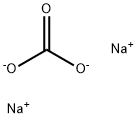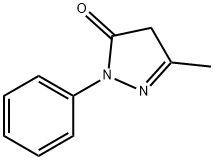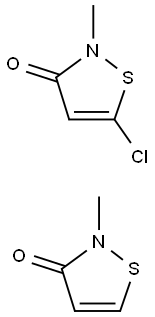2-Octyl-2H-isothiazol-3-one
Synonym(s):2-Octyl-3(2H)-isothiazolone;Octhilinone
- CAS NO.:26530-20-1
- Empirical Formula: C11H19NOS
- Molecular Weight: 213.34
- MDL number: MFCD00072473
- EINECS: 247-761-7
- SAFETY DATA SHEET (SDS)
- Update Date: 2024-12-18 14:08:52

What is 2-Octyl-2H-isothiazol-3-one?
Description
This isothiazolione, octylisothiazolinone, is contained in relatively fewer products than other isothiazolinones.
Chemical properties
Light Yellow Oil
Chemical properties
Yellow solid or clear dark amber liquid.
The Uses of 2-Octyl-2H-isothiazol-3-one
Fungicide. Antimicrobial agent
The Uses of 2-Octyl-2H-isothiazol-3-one
Fungicide. Biocide in cooling-tower water, paints, cutting oils, cosmetics and shampoo; for leather preservation.
The Uses of 2-Octyl-2H-isothiazol-3-one
2-n-Octyl-4-isothiazolin-3-one is a mildeweide; bactericide; fungicide; biocide in cooling-tower water; in paints, cutting oils, cosmetics, and shampoos; leather preservation; wound protectant for pruning cuts.
Definition
ChEBI: A member of the class of 1,2-thiazole that is 1,2-thiazol-3-one substituted on the nitrogen (position 2) by an octyl group. A fungicide and antibacterial agent, it is used for treatment of canker and other fungal and bacterial diseases in fruit trees. It i no longer approved for use within the European Union.
General Description
Clear dark amber liquid. Used as a fungicide.
Air & Water Reactions
Insoluble in water.
Reactivity Profile
2-Octyl-2H-isothiazol-3-one reacts as an isothiocyanate. Isothiocyanates are incompatible with many classes of compounds, reacting exothermically to release toxic gases. Reactions with amines, aldehydes, alcohols, alkali metals, ketones, mercaptans, strong oxidizers, hydrides, phenols, and peroxides can cause vigorous releases of heat.
Fire Hazard
2-Octyl-2H-isothiazol-3-one is probably combustible.
Flammability and Explosibility
Non flammable
Contact allergens
This isothiazolinone, contained in relatively few products compared to other isothiazolinones, is used in cleaning and polishing agents, latex paints, stains, adhesives, wood and leather preservatives, metalworking fluids (cutting oils), and plastic manufacture.
Safety Profile
Moderately toxic by ingestion and skin contact. A skin and severe eye irritant. A rmldewcide. When heated to decomposition it emits very toxic fumes of SOx and NOx. See also KETONES.
Potential Exposure
Isothiazolone/isothiocyanate/heteroaramatic fungicide and microbiocide used on textiles, in metalworking fluids, and some water thinned paints. Its use as a fungicide on cotton was canceled in the United States and the tolerances were revoked in 1998.
Shipping
UN2922 Corrosive liquids, toxic, n.o.s., Hazard class: 8; Labels: 8-Corrosive material, 6.1-Poisonous materials.
Incompatibilities
Oxidizers. Contact with hydrogen peroxide may form explosive material. Isothiocyanates are incompatible with many classes of compounds, reacting exothermically to release toxic gases. Reactions with amines, aldehydes, alcohols, alkali metals, ketones, mercaptans, strong oxidizers, hydrides, phenols, and peroxides can cause vigorous releases of heat. Ketones behave a weak acid. Forms water soluble alkali metal salts. Ketones are reactive with many acids and bases liberating heat and flammable gases. The amount of heat may be sufficient to start a fire in the unreacted portion of the ketone. Ketones react with reducing agents such as hydrides, alkali metals, and nitrides to produce flammable hydrogen gas and heat. Ketones are incompatible with isocyanates, aldehydes, cyanides, peroxides, and anhydrides. They react violently with aldehydes, nitric acid, and perchloric acid.
Waste Disposal
Consult with environmental regulatory agencies for guidance on acceptable disposal practices. Generators of waste containing this contaminant (≥100 kg/mo) must conform with EPA regulations governing storage, transportation, treatment, and waste disposal. Under 40 CFR 261.5 small quantity generators of this waste may qualify for partial exclusion from hazardous waste regulations.
Properties of 2-Octyl-2H-isothiazol-3-one
| Melting point: | <25 °C |
| Boiling point: | 120°C |
| Density | 1.04 |
| vapor pressure | 4.9hPa at 25℃ |
| refractive index | 1.5500 (estimate) |
| Flash point: | 23℃ |
| storage temp. | Sealed in dry,2-8°C |
| solubility | Chloroform (Slightly), Ethyl Acetate (Slightly) |
| pka | -2.04±0.20(Predicted) |
| form | neat |
| color | White or Colorless to Yellow |
| Water Solubility | <0.1 g/100 mL at 19 ºC |
| Merck | 14,6755 |
| BRN | 1211137 |
| Stability: | Stable. Incompatible with strong oxidizing agents. |
| CAS DataBase Reference | 26530-20-1(CAS DataBase Reference) |
| NIST Chemistry Reference | 3(2H)-isothiazolone, 2-octyl-(26530-20-1) |
| EPA Substance Registry System | Octhilinone (26530-20-1) |
Safety information for 2-Octyl-2H-isothiazol-3-one
| Signal word | Danger |
| Pictogram(s) |
 Corrosion Corrosives GHS05  Skull and Crossbones Acute Toxicity GHS06  Environment GHS09 |
| GHS Hazard Statements |
H314:Skin corrosion/irritation H317:Sensitisation, Skin H330:Acute toxicity,inhalation H410:Hazardous to the aquatic environment, long-term hazard |
| Precautionary Statement Codes |
P260:Do not breathe dust/fume/gas/mist/vapours/spray. P273:Avoid release to the environment. P280:Wear protective gloves/protective clothing/eye protection/face protection. P303+P361+P353:IF ON SKIN (or hair): Remove/Take off Immediately all contaminated clothing. Rinse SKIN with water/shower. P305+P351+P338:IF IN EYES: Rinse cautiously with water for several minutes. Remove contact lenses, if present and easy to do. Continuerinsing. |
Computed Descriptors for 2-Octyl-2H-isothiazol-3-one
| InChIKey | JPMIIZHYYWMHDT-UHFFFAOYSA-N |
2-Octyl-2H-isothiazol-3-one manufacturer
Speciality Organics Pvt. Ltd.
New Products
(S)-3-Aminobutanenitrile hydrochloride 4-Methylphenylacetic acid N-Boc-D-alaninol N-BOC-D/L-ALANINOL Tert-butyl bis(2-chloroethyl)carbamate 3-Morpholino-1-(4-nitrophenyl)-5,6-dihydropyridin- 2(1H)-one Furan-2,5-Dicarboxylic Acid Tropic acid 1-Bromo-3,5-Di-Tert-Butylbenzene S-2-CHLORO PROPIONIC ACID ETHYL ISOCYANOACETATE 2-Bromo-1,3-Bis(Dimethylamino)Trimethinium Hexafluorophosphate 4-IODO BENZOIC ACID 3-NITRO-2-METHYL ANILINE 1-(2,4-DICHLOROPHENYL) ETHANAMINE (2-Hydroxyphenyl)acetonitrile 4-Bromopyrazole 2-(Cyanocyclohexyl)acetic acid 4-methoxy-3,5-dinitropyridine 1-(4-(aminomethyl)benzyl)urea hydrochloride 2-aminopropyl benzoate hydrochloride diethyl 2-(2-((tertbutoxycarbonyl)amino) ethyl)malonate tert-butyl 4- (ureidomethyl)benzylcarbamate Ethyl-2-chloro((4-methoxyphenyl)hydrazono)acetateRelated products of tetrahydrofuran








You may like
-
 26530-20-1 98%View Details
26530-20-1 98%View Details
26530-20-1 -
 2-n-Octyl-4-isothiazolin-3-one CAS 26530-20-1View Details
2-n-Octyl-4-isothiazolin-3-one CAS 26530-20-1View Details
26530-20-1 -
![2-n-Octyl-4-isothiazolin-3-one [for Biochemical Research] CAS 26530-20-1](https://img.chemicalbook.in//Content/image/CP5.jpg) 2-n-Octyl-4-isothiazolin-3-one [for Biochemical Research] CAS 26530-20-1View Details
2-n-Octyl-4-isothiazolin-3-one [for Biochemical Research] CAS 26530-20-1View Details
26530-20-1 -
 Octhilinone 98% (GC) CAS 26530-20-1View Details
Octhilinone 98% (GC) CAS 26530-20-1View Details
26530-20-1 -
 2-Octyl-4-isothiazolin-3-one CAS 26530-20-1View Details
2-Octyl-4-isothiazolin-3-one CAS 26530-20-1View Details
26530-20-1 -
 1975-50-4 98%View Details
1975-50-4 98%View Details
1975-50-4 -
 14714-50-2 (2-Hydroxyphenyl)acetonitrile 98+View Details
14714-50-2 (2-Hydroxyphenyl)acetonitrile 98+View Details
14714-50-2 -
 118753-70-1 98+View Details
118753-70-1 98+View Details
118753-70-1